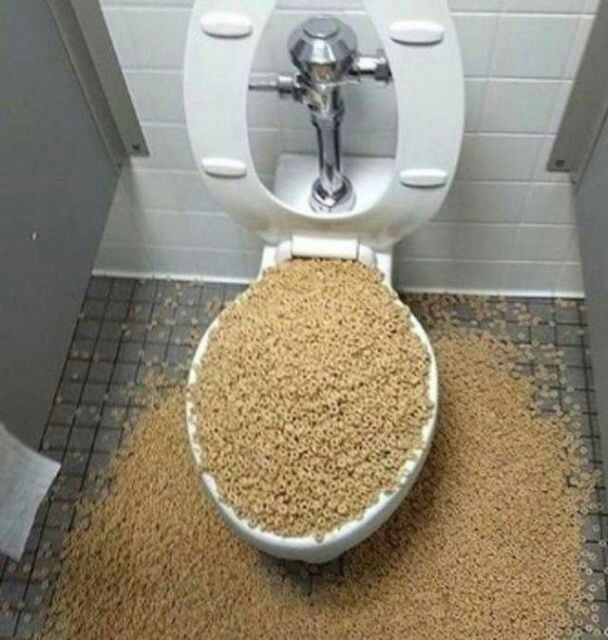Is it Sensible to Flush Food in the Toilet?
Is it Sensible to Flush Food in the Toilet?
Blog Article
Have you been searching for answers around Flushing Food Down the Toilet??

Introduction
Many people are frequently faced with the predicament of what to do with food waste, especially when it involves leftovers or scraps. One typical question that arises is whether it's okay to purge food down the bathroom. In this post, we'll look into the reasons why people might think about flushing food, the repercussions of doing so, and alternate methods for appropriate disposal.
Reasons why people could think about purging food
Lack of recognition
Some people may not be aware of the potential harm brought on by flushing food down the commode. They might incorrectly believe that it's a safe technique.
Convenience
Purging food down the toilet may seem like a fast and very easy remedy to dealing with unwanted scraps, especially when there's no close-by trash can readily available.
Negligence
In some cases, individuals might just pick to flush food out of sheer negligence, without thinking about the consequences of their activities.
Consequences of flushing food down the commode
Environmental influence
Food waste that winds up in rivers can add to contamination and harm aquatic environments. In addition, the water used to purge food can strain water sources.
Plumbing issues
Flushing food can cause clogged pipes and drains, triggering pricey pipes repair services and inconveniences.
Types of food that must not be purged
Coarse foods
Foods with fibrous textures such as celery or corn husks can obtain tangled in pipelines and create clogs.
Starchy foods
Starchy foods like pasta and rice can soak up water and swell, bring about obstructions in pipes.
Oils and fats
Greasy foods like bacon or food preparation oils ought to never ever be flushed down the bathroom as they can solidify and trigger clogs.
Appropriate disposal methods for food waste
Utilizing a garbage disposal
For homes geared up with garbage disposals, food scraps can be ground up and purged via the plumbing system. Nonetheless, not all foods appropriate for disposal in this manner.
Recycling
Certain food product packaging materials can be recycled, decreasing waste and minimizing environmental impact.
Composting
Composting is an eco-friendly way to get rid of food waste. Organic products can be composted and used to enrich soil for horticulture.
The value of correct waste monitoring
Decreasing ecological damage
Proper waste management practices, such as composting and recycling, help reduce air pollution and preserve natural deposits for future generations.
Safeguarding plumbing systems
By staying clear of the method of flushing food down the toilet, house owners can avoid costly plumbing fixings and maintain the honesty of their plumbing systems.
Final thought
To conclude, while it might be alluring to purge food down the commode for comfort, it is very important to understand the potential consequences of this action. By taking on correct waste management methods and getting rid of food waste sensibly, individuals can add to healthier pipes systems and a cleaner environment for all.
FLUSH FOOD DOWN THE TOILET?
FLUSHING FOOD CAN CAUSE BLOCKED DRAINS IN YOUR HOME
All of the plumbing fixtures in your home are connected to the same sewer pipe outside of your home. This outdoor sewer pipe is responsible for transporting all the wastewater from your home to the Council sewer mains. Even small pieces of food that go down the kitchen sink can cause problems for your sewer. It should therefore be obvious that flushing larger bits of food, such as meat, risks a clog in either the toilet itself or the sewer pipes. Flushing greasy food is even more problematic because oil coagulates when it cools, coating the interior lining of your pipes.
THE TOILET IS NOT A BIN
Food isn’t the only thing that people shouldn’t be flushing down the toilet. People use the toilet to dispose of all kinds of things such as tampons, makeup wipes, dental floss, kitty litter and even underwear. Water goes to great lengths to educate residents about the high costs and stress placed on wastewater treatment systems simply from people flushing the wrong stuff down the toilet. It costs taxpayers millions of dollars each year, and homeowners thousands in blocked drain repairs.
FLUSHING FOOD IS A WASTE OF WATER
Flushing food is a waste of our most precious resource - water. In June this year Level 1 water restrictions were introduced to protect water supply from drought conditions. Much of New South Wales continues to be affected by prolonged drought with recent figures revealing up to 97 per cent of the state remains in drought. Depending on whether you have a single or dual flush toilet, every single flush uses between five and 11 litres of water. In the current climate this is a huge amount of water to be wasting on flushing food that should be placed in the bin (or better yet, the compost).
https://www.jabplumbingsolutions.com.au/blog/can-you-flush-food-down-the-toilet

Do you really like reading about Is it safe to flush food (especially rice) down the toilet?? Try leaving a review directly below. We would be delighted to know your views about this blog. We are looking forward that you come back again soon. Kindly take the time to promote this blog if you appreciated it. Thanks a bunch for being here. Kindly visit our site back soon.
Book Today! Report this page